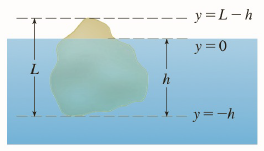PHYS 121 Chapter Notes - Chapter 13: Capillary Action, Blaise Pascal, Surface Tension
Document Summary
The ratio of force to the area over which that force is distributed. The pressure a liquid exerts depends on its depth. The pressure of a liquid also depends on the density of liquid. The denser the liquid, the greater the liquid pressure. When liquid presses against a surface, there is a net force that is perpendicular to the. Total pressure of a liquid is weight density multiplied by depth plus the pressure of the atmosphere surface. Forces against the bottom are greater than the downward forces against the top producing. What makes an object sink or float (13. 5) The relationship between buoyancy and displaced liquid was first discovered in the 3rd century by the greek scientist archimedes. An immersed object is buoyed up by a force equal to the weight of the fluid it displaces. Whether an object will sink or float in a liquid depends on how the buoyant force.


















